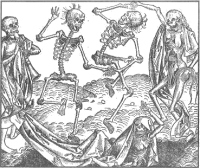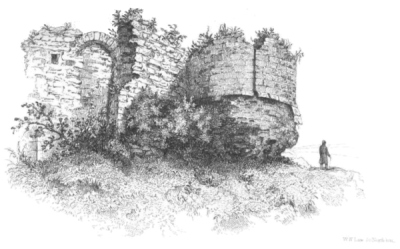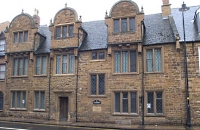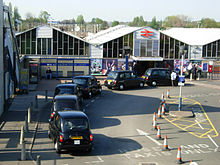Northampton and the Castle were greatly affected by the Black Death (1349-50). There followed a steady period of decline due to the upheavals caused by the enormous loss of population. By then its strategic importance as the first major castle a day’s ride north of London had become less obvious. The last parliament was held in the Castle in 1380, however it continued to be used as a County Gaol for some time afterwards.
There exists an account of the Castle in an itinerary penned in 1536 by Henry VIII’s librarian, Leland, who writes that “The castel standeth hard by the West-gate and hath a large kepe. The Area of the resideu is very large, and the bullewarks of yerth be made afore the castelle gate.”
However, by the reign of Elizabeth (1558-1603) the site was being described as ‘ruinous’; in 1593 Norden wrote that “This is a faire towne, with faire old buildings, large streets, and a very ample and faire market-place; it is walled about with a wall of stone, but mean too of strength; near unto the towne there standeth an eminent castle, ruinous.”
One event that demonstrates the extent of the decline of the Castle was in 1662 when Charles II ordered the sleighting of the town and partial demolition of the Castle as retribution for supporting the parliamentarian ‘Roundheads’ rather than Charles I’s ‘Cavaliers’ in the Civil War. Though the town walls suffered, only ‘part of the Castle walls’ were destroyed; the King had ordered that “so much of [the Castle] should remain as is necessary for y’ shelter of y’ Justices in y’ bench”.
Northampton’s luck continued to fail when the great fire of 1675 struck, destroying a great part of the town and wiping out most of the historic buildings in the centre. The Sessions House in George Row was the first public building erected after the fire.
The Castle site was sold to Robert Haselrig (later Hazelrigg). Hazelrigg House was originally an Elizabethan house that escaped the fire of 1675 and still stands on Marefair to this day. The Hazelrigg family retained the Castle site until 1861, at which point it was sold to Samuel Walker who dug it for treasure and finally the site passed into the hands of L&NW Railway Co. who leveled the site to build a station.





